


























































































































































































































































































































































It’s important for business owners to be open to new ideas and to be willing to evolve as their companies mature. What worked in the past might not be as effective in the present, and might not work at all in the future. This evolution can come from taking advantage of new equipment and supplies, different thoughts about what their employees need or recognition that it’s time to embark on a completely different path. Fighting the future is rarely the path to success.
In this month’s issue of American Drycleaner, we’re taking a look at different ideas that might change the face of your business or the path of your career.
Our first feature this month, “Using Automation to Ease Labor Concerns,” deals with ways dry cleaners can use technology to cut down on the number of people needed to perform day-to-day tasks. The tight labor market has prodded some cleaners to explore this area perhaps sooner than they would have, but for the owners we spoke with, the increases in efficiency are proving to be worth the investment.
Our second feature, “Exit Strategies,” examines with the steps dry cleaners should take when they’ve decided it’s time for the next stage of their lives. Mistakes made during the sale of a business can cost a cleaner thousands of dollars, and could potentially crack the nest egg they’ve carefully built over the years. With planning and the aid of professionals, however, this process can become manageable and rewarding.
Our final feature, “Mental Health in the Workplace,” highlights how important it is for employers, managers and fellow employees to recognize when a team member is struggling. Besides the simple human factor of wanting the best for those around us, mental health challenges can lead to lower productivity, absenteeism, burnout and, ultimately, employee turnover. By spending some time helping those in need, owners can save themselves and their employee pain down the road.
Don’t be afraid to evolve your business into what it needs to be for future success. American Drycleaner will be with you every step of the way.
American
IL and at additional mailing offices.
POSTMASTER, Send changes of address and form 3579 to American Drycleaner, Subscription Dept., 125 Schelter Rd., #350, Lincolnshire, IL 60069-3666. Volume 90, number 2. Editorial, executive and advertising offices are at 650 West Lake Street, Suite 320, Chicago, IL 60661. Charles Thompson, President and Publisher. American Drycleaner is distributed selectively to: qualified dry cleaning plants and distributors in the United States. The publisher reserves the right to reject any advertising for any reason.
© Copyright AMERICAN TRADE MAGAZINES LLC, 2023. Printed in U.S.A. No part of this publication may be transmitted or reproduced in any form, electronic or mechanical, without written permission from the publisher or his representative. American Drycleaner does not endorse, recommend or guarantee any article, product, service or information found within. Opinions expressed are those of the writers and do not necessarily reflect the views of American Drycleaner or its staff. While precautions have been taken to ensure the accuracy of the magazine’s contents at time of publication, neither the editors, publishers nor its agents can accept responsibility for damages or injury which may arise therefrom.
Publisher
Charles Thompson
312-361-1680
cthompson@ATMags.com
Associate Publisher/


National Sales Director
Donald Feinstein
312-361-1682
dfeinstein@ATMags.com
Editorial Director
Bruce Beggs
312-361-1683
bbeggs@ATMags.com
Editor
Dave Davis
312-361-1685
ddavis@ATMags.com
Digital Media Director
Nathan Frerichs

312-361-1681
nfrerichs@ATMags.com
Production Manager
Mathew Pawlak
Advisory Board
Jan Barlow
Mike Bleier
John-Claude Hallak
Monika Manter
Wesley Nelson
Kyle Nesbit
Fred Schwarzmann
Vic Williams
Wayne Wudyka
Contributing Editors
Dan Miller
Diana Vollmer
Martin Young
Office Information
Main: 312-361-1700
Subscriptions
847-504-8175
ADC@Omeda.com
www.american drycleaner.com


While automation might not be a cure-all for their labor issues, cleaners who have the right attitude and expectations can make the most of the labor available to them.
“You shouldn’t be going into automation specifically about replacing people,” says Christopher White, executive director of America’s Best Cleaners (ABC),
Florida-based dry cleaner Sudsies, keeps in mind when considering new equipment.
“Automation, to me, is about just making it easier for my team,” he says. “It’s also about reducing errors, increasing productivity, increasing the quality of service, and repurposing our team to other areas where maybe there would have been a shortfall in labor. It is the overall package.”






Sudsies—with two processing facilities, five “bou-








While robots aren’t here yet, today’s tech can make a big difference for dry cleaners




























































tique” storefronts and 180 employees—has fully embraced automation, ranging from conveyors to bagging stations to automated dispatch for its 40 drivers. One of the benefits of this automation is that employees can be brought up to speed more quickly for a more flexible workforce.
“The training becomes a much easier proposition with automation,” says Art Bai, the chief technology officer for Sudsies. “Someone who would have had to be trained on the specifics of order assembly, for example, is now essentially scanning the garments on the conveyor.”
Bai says there’s a learning curve when introducing a new piece of technology, but he’s found the results to be worth it for all involved.
“Once they get comfortable with it, which is very quickly — hours, not days — then it’s a matter of pressing the necessary buttons and exercising the necessary controls enough times,” he says. “But we’ve seen this time and again, as soon as they get comfortable with it, they will be comfortable with the entire process. The next thing you know, in a couple of weeks, they really don’t know how they lived without it.”
Will Waterstraat, managing partner at Seattle-based Helena Cleaners, has also found that this increased productivity is helping him put limited labor resources to better use.
“It makes your employees more efficient,” he says. “Previously, where we would need four employees for a particular task, now we need one and a half. It really does help when it comes to looking at labor. It’s almost non-negotiable in today’s world that you need to be pushing toward that form of automation.”

Helena Cleaners recently opened a 20,000-square-foot plant, and was able to design in automation, including an assembly conveyor, bagger and distribution conveyor. The company has 48 employees, three storefronts and
seven delivery vans. Between building the new plant and dealing with the tight labor market, Waterstraat felt the time was right to increase the automated aspect of the company’s processes.
“I love the culture and the people when we have the labor force who wants to be here,” he says. “But it really seems that over the last five years, and specifically over the last three years, there is just a lack of want to work. That forced my hand because we were spending so much money on Indeed postings. On top of that, someone would start a job, come to work for us for a week — or a day — and then not show back up. That really starts taxing your cash flow.”
While automation can seem expensive at the outset, White says that cleaners considering adding equipment should look at this as a long-term investment — one that will pay off and give an advantage for future growth.
“In the design process, you must start with the end in mind and work backward,” he says. “We like to start with your 10-year goal, especially if you are buying the property, and then work back to seven, five, or three years and develop financial and developmental triggers. This allows you to budget your investments and upgrade as the business calls for it.”
Waterstraat made these calculations when building a new plant.
“Automation can be a really big expense,” he says. “The distribution conveyor and the assembly conveyor, together, were $240,000. That’s not a small expense. But then you realize how fast you’re going to be able to pay that off. We went down from four employees to one and a half. In Seattle, on average, one employee a month is probably about $4,000. So that’s instantly almost


$12,000 a month back. So, you start thinking about what your payment is on it, and it starts making sense.”
“A lot of people see a dry cleaner who is fully automated, and they think, ‘Wow, that’s a lot of money,’” says Luis Moreno, general manager of Sudsies. “And, yes, it is a lot of money. But they also think they will have to do everything at once, and they don’t. They could start with one automated system, evolve into another, and eventually become fully automated. I also think they will see the benefits on day one. That’s the way we did it. We started with one, and we kept adding on.”
It’s also important to recognize that there are different options when it comes to automation, Bai says.
“There are a number of players in the automation industry, and it’s not a one-size-fit-all situation,” he says. “I would say the very first thing to look at is your volume and your true needs. You can take a Mercedes out to the grocery store for a five-minute round trip, but is that really the best use of your money and the technology? It’s important to know the options, but it’s also important to really have a long, hard look at your production numbers and see what fits best.”
When deciding to embark on the path to automation, certain elements are going to give cleaners more immedi-

ate results than others. This “bang for the buck” element can ease the transition, Loeb says.
“The first step, which costs the least, is bar-coding the items,” he says. “If you’re not bar-coding, you can’t track it, and you can’t bag it. Without this, there is no automation.”
Once that element is in place, Waterstraat says that an assembly conveyor that sorts and bags the orders will make the biggest difference in maximizing labor efficiencies.
“We previously had assisted assembly, and it would easily take three to four people daily, putting those orders together and bagging them, with the possibility of making mistakes,” he says. “With assisted assembly, you really limit the number of mistakes that are getting made. Also, when you take out the manual labor of the bagging, it becomes a much faster process.”
Cleaners should also keep their eye out for new technology, because the pace of development is only getting faster.
“I recently witnessed a four-buck carousel pants tension topper/legger that could produce 250-plus pants an hour of reasonably good quality in a large dry cleaner,” White says. “These could be game changers in today’s tight labor market.”
Loeb estimates that the technology at his company has reduced the need for labor there by 40 or 50 employees.
(Continued on page 26)
There’s more: We’re just two members of NIE’s team of experts. NIE has been handling fabricare insurance since 1915!




 By Dave Davis, Editor
By Dave Davis, Editor
Dry cleaners spend years, sometimes decades, of their lives building their business. When it comes time to make a change — because of retirement, illness, death or simply wanting to explore a different career — mistakes made in the process of selling that business can cost a cleaner thousands of dollars. The owner’s nest egg could be cracked if he or she doesn’t take certain steps in the buildup to the sale.

Part of getting a fair deal when selling a business is to truly understand what that business is actually worth — not what the owner thinks or hopes it’s worth. From the buyer’s perspective, they need the answers to some fairly simple questions.
“What a buyer wants to know is, ‘How much am I going to make, and how much is it going to cost me?’





So, figuring out the cash flow and the expenses is very important,” says Liliane Tietjen, business intermediary at Patriot Business Advisors.
One of the main components of measuring a business’ worth is indicated by its tax returns, which provide a window to the company’s profits. But “creative” accounting done to minimize the money paid in taxes can come back to haunt an owner.

“The most important thing about selling your business is to clean up your tax return,” Tietjen says. “Report everything on your tax return. A lot of cleaners might be grossing $400,000, but they’re reporting $250,000 on their tax return. A bank loan will be almost impossible to get, and how are you going to sell if you can’t get a bank loan on it?”
One way many business owners lower their tax liability is to maximize their deductions.



“I’ve had two deals walk away this year because the payroll was all cash,” she says, “and the potential buyers said, ‘Yeah, I can’t get involved in that.’ If they’re not on a W-2, put your employees on a 1099, but there must be some papers. If not, that will make a deal blow up so quickly.”

While a dry cleaner is selling the revenue the business makes, he or she is also selling the company’s equipment and assets. Again, it can be easy to believe these resources are worth more than they are, says Richard Ehrenreich, managing member and principal consultant of Ehrenreich & Associates, so it’s important to find a way to remain dispassionate about this.
“In the evaluation stage, we look at 60 different things in the plant and 40 items for each non-production plant profit center, and grade them on a 0-to-4 score, then weigh each item by importance on an 1-to-6 scale,” he says. “We go through these one by one to see if they should be noted in the SWOT (strength, weakness, opportunity, or threat) analsysis. It’s not always 100% perfect, but it’s 100% better than not doing something like this. It takes the emotion out and makes the owner look at things they might have neglected to consider in the past.”
When the financials are put in order, Tietjen has found there’s a formula that seems to be holding for the sale of drycleaning companies.
“The multiple on the sale of a dry cleaner right now, for the smaller dry cleaners, is two times cash flow,” she says. “For the larger cleaners. It’s two and a half times cash flow. For a really big cleaner that’s cash-flowing $600,000 or $800,000, I can get three times cash flow. But we need clean tax returns.”
“They write off their car, they write off their health insurance, they probably go down to the grocery and write that off as ‘supplies,’” Tietjen says. “I understand nobody wants to pay the government. I don’t want to pay the government. But that’s just the way it is. And a lot of sellers, if the tax return is bad, will walk away from the deal.”
John Mikaelian, owner of AAA Venture Business Brokers, agrees with Tietjen on this critical point: “People don’t want to show taxes on the bottom line. At least for a year or two, pay the taxes — you can make more money because you show higher income on the bottom line.”
Bad payroll practices can also be a potential dealbreaker, Tietjen says, with some owners paying their staff on a cash-only basis. Besides the potential legal problems this can generate for the owner, it also makes a business more difficult to sell.
While there are times when a business owner finds he or she must sell the company — health problems, a death, a divorce or other life event — those who can plan an orderly exit are better off, Ehrenreich says.
“The best time to make a transition is when things are going great — when you’re spending all your time at the country club,” he says. “If you wait until the business has gone to hell in a handbasket, that’s not the time where it’s the most valuable.”
Buyers also look at the reasons why the business is being sold, Tietjen says.

“One of my big questions is, ‘Why are you selling?’ If they’re 65 to 70 years old, that’s fine. But if they’re looking to just flip it, why? What exactly is going on?”
If the owner doesn’t have a convincing reason to sell, she says, then the potential buyer starts looking for flaws.
(Continued on page 19)

SMRT is dry cleaning software that puts every aspect of your business operations in one easy-to-use interface and automates tasks you’ve always dreamed of simplifying. Time is money - and now you’ll have more of both. How can you be sure SMRT gets your business? Because we are dry cleaners too. Let us show you the way.

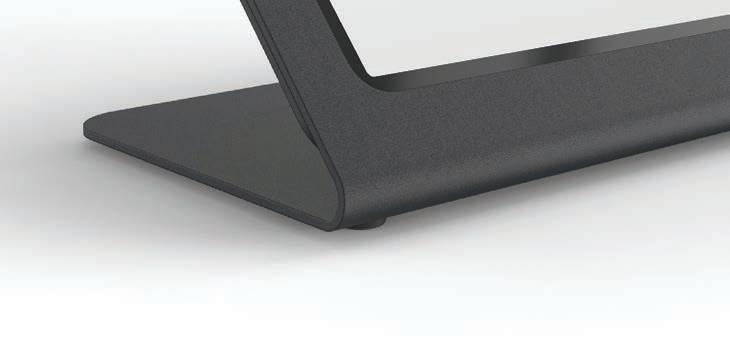

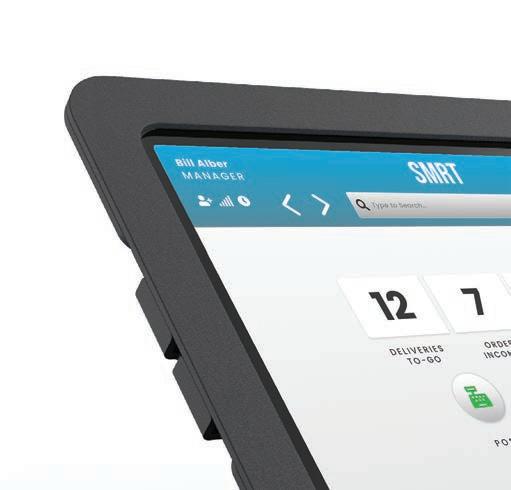
“I’M BLOWN AWAY BY SMRT MARKETING. MY JANUARY ROUTES ARE UP 41%, AND MY RETAIL STORES ARE UP 49%. WOW!”
ELTON CERDA, NYC DRY CLEANERS
Your business is your life. Live SMRT.
SMRT Marketing slashes the time and effort required to grow your business. Our automated tools match your customers with the right messaging at the right time, build your digital reputation, and deliver explosive results. Your SMRT System is designed to handle it all. The question is, are you ready?



MARKETING IS A GRAND SLAM FOR OUR BUSINESS. ”
“I am very pleased with how the software is performing and the functionality. It has made communication with our customers more robust and streamlined. Issues I have posed to the company have been listened to and actual changes have taken place based on recommendations. have Implemented around 15 different software products on a large scale in my career and would have to say this was one of the best experiences so far.”
“I used a legacy system (the largest in the industry) for 13 years before switching to this “upstart” back in 2017. The difference was immediate, obvious, and impactful for our operation. And that was back when they were an upstart, and the software was still in its relative infancy. They are now one of the dominant players in the market, and for good reason. The absolute best thing about this software, IMO, is the way customer communications are handled. It’s partly an email client, part text interface, and part slack, all tied into one, flawlessly.”
“...from the change over to the delivery for my business the SMRT Systems is [by far] the best at teaching employees how to work the system. My customers swear that the texting to let customers no the there Dryclean orders are done is [easily] the best in our industry! So glad we went with SMRT!”
BILL
“The developers are always working to make the system work better. It already works great but if there is something that you would like for it to do you can request it and it will probably get done. I also like that it is so easy to use. New associates can be up to speed in just a few days.”
“We have improved garment tracking and communication internally and with customers. We are able to be really transparent. The customer interface is great. The team is great to work with! Our systems and processes are getting streamlined in a way we’ve been dreaming about for years, but had roadblocks with previous software.”

“The migration to SMRT was validated and praised by both our multi-generation of employees and customers. The ease of learning, navigating, and customer interaction has elevated our service and won the confidence and respect from all. Reporting and data analysis continues to become even more sophisticated. Unlike many services where support diminishes after the honeymoon stage, the SMRT support team continues to be very responsive with great attitudes long after conversion.”
“Our internal company communications, automation with management reporting, billing and customer resolutions have been the biggest benefits with the software implementation. What took several emails, manual phone calls and meetings with our management are now easily reported across all communicaitons channels and have reduced the time to resolve day to day processes.”
“...SMRT allows you to follow real time the daily ins and outs of your business. am able to physically leave my facility and check in remotely. This was a huge step in me being able to devote time with my family, and giving me back control over my business.”
“My overall experience with SMRT has been fantastic! They are a great partner to have in the industry.”
“My overall experience with SMRT has been great. The customer support and complete openness to look for and create new functions has made our everyday use easier. The ability to track garments, contact customers, track drivers, and option to make just about any kind of data report we request has been a life saver.”
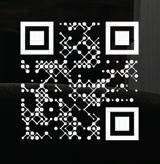
“The extra communciation features for my team and our customers. The ease of use. The delivery and route optimization features to help build and organize our growing Pickup and Delivery system. Has incoporated into our marketing efforts beautifully.”
(Continued from page 14)
That being said, Mikaelian believes that if you do have a good reason — not that the business is failing — you can decide when to sell based on your own timetable.
“There are people who decide to change and do something different — to go into another industry,” he says. “There’s nothing wrong with that if you’re young — if you’re in your 40s or even 50s — and want to change because you got tired of being in a drycleaning business, that’s OK.”
“You have to look at where you are in life,” Ehrenreich agrees. “What is your health condition, and where does your family need you? And sometimes, you’ve got to sell something when its (value is) high and then buy something else and build that. You can make money if you sell high and buy low.”
When the personal decision is made, external forces are secondary, according to Mikaelian.
“There is no good time or bad time (to sell a drycleaning business),” he says. “Believe it or not, dry cleaning is a needed business — you can’t do without it, for the simple fact that you have to get your clothes cleaned. Granted, there are a lot of people who don’t have to get dressed up for work, but still, many dry cleaners also do laundry, wash rugs and other items to increase income.”
If you are deciding to leave the business rather than being forced to leave, do everything deliberately.
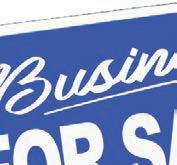
“The right time is not the time when you make the decision,” Mikaelian says. “When you decide to do it, don’t do it that morning. Go through the process and speak with your accountant to make sure that you have the right cash flow. Give it at least a year.”
In addition to putting a value on the business, it’s important to be able to maintain that value during the negotiation process of the sale.


Since selling a business can be a once-in-a-lifetime experience, most dry cleaners don’t have the expertise to make the best deal for themselves. Finding a professional in business sales — especially one with experience in the drycleaning industry — can be key in making the most out of the transaction.
Mikaelian says he learned this lesson the hard way.
“Prior to being a broker, I was in the drycleaning business, with a 4,000-square-foot plant and three drop-off locations in the early 1970s,” he says. “After deciding to sell, I went to a real estate broker, and man, did he screw the whole thing up. At the time, I was doing close to $500,000 a year, and he told me I couldn’t get more than



Mikaelian didn’t know there were business brokers at the time, so he stayed with the real estate broker.

“He found someone who made a deal for $150,000, with $70,000 down,” he says. “That was an outrageous price — it should have been much higher than that — and I kept a note for the remainder. Sellers should not do that without getting a personal financial statement from the person to see where they are financially. A year and a half later, the guy went bankrupt. I can’t tell you how difficult that was — that’s what made me become a broker.”
(Photo: © iqoncept/Depositphotos)
Ehrenreich says there is no substitute for the value of an experienced broker, because they know how to present your business to potential buyers in the best light.

“You’ve got to be able to put your mindset to the buyer rather than yourself,” he says. “And that’s hard to do.”
Having a strategy when building a deal is crucial — and most owners can’t play the game to its fullest.
“You’ve got to get the emotion out of it,” Ehrenreich says. “The first person to move after you’ve started in negotiation is going to be the loser. Sometimes you’ve got to give the person a chance to think about it — to think they might lose this deal. A lot of this stuff is psychological, and you just can’t go in emotionally. You’ve got to be playing your cards.”
Tietjen says she understands the complexities at work and how owners can often volunteer too much information too soon.
When showing a dry cleaner for sale and making introductions to potential buyers, she tells the owner to answer their questions only when she’s at their side. “And if they’re saying the wrong thing, I redirect the conversation some other way,” Tietjen adds.
One of the rules for selling a house also applies to selling a business: You never get a second chance to make a first impression.
“Clean it up and paint it, shine the chrome, and hire and train the best staff,” Ehrenreich says. “Also, improve the documentation of your





procedures, benefits and financials.”






“It’s very important to clean the (facility),” Tietjen agrees. “When somebody walks in and there are 2 inches of brown dust, it’s not pretty. It doesn’t matter what the numbers are — they’re probably not going to buy that because it’s gross. Clean it and make it sparkle.”

While owners might see the time of planning a sale as an opportunity to save money on items like marketing, Ehrenreich strongly warns against that strategy.

“It’s not the time to be cheap — it is the time to be doing a lot of discretionary spending on advertising,” he says. “Owners should be making their business run as perfectly as possible.
“Buyers want to see a smoothrunning, established business that’s well-documented, with training, financing, and an experienced staff in place. They want to see a business that’s profitable, with ability to grow — they want a local market leader, but one that is still growing.”
One thing an owner should not do is discuss their intention to sell with anyone not a decision-maker, including staff, he says.
“The owner is best not disclosing anything to pretty much anybody — a confidentiality breach may have serious circumstances with the business,” he says. “Talk gets out and staff leaves, because the first thing they’re going to want to do is protect themselves and find another job they believe will be more stable.”
Tietjen favors informing employees of the sale right before or on the day of closing, when the buyer is introduced.
“Some of them may start to look for new jobs because they’re nervous, and some of them will take advantage of the owner. ‘Oh, he’s selling — he needs me.’ They also
might ask for more money — ‘If you want me to stay, you’re gonna pay me more.’ Tell the employees after closing.”
News of changing ownership could also have business ramifications.
“Customers start looking for another cleaner,” Ehrenreich says. “Banks look at you as a short-timer, the landlord positions his nephew to take over your lease, and so on. Don’t do meetings in local restaurants or public places — the walls have ears! The more you talk, you’re just creating problems for yourself.”
He says most sellers shouldn’t consider closing the deal as the end of their time in the business, especially if they are taking a buyout over time and the new owner is inexperienced with dry cleaning.
“I’ve got a client who is doing great,” Ehrenreich says. “He’s got a laundromat, a drycleaning plant, a laundry plant, an institutional laundry operation, routes and drop-off stores. Each one of these things has a different learning curve — and we haven’t found a way to give anybody an ‘injection’ so they can learn all these things at once. There’s no place you go to learn all these things.”
The business’ continued health often depends on the prior owner’s experience.
“The only practical way forward is to have that owner come in, and they should be paid for it,” he says. “Maybe 40 hours a week to start, which is probably a lot less than they normally work, and then eventually phase out. So, by the time he leaves, the buyers would be able to function on their own.”
When the time arrives to sell a business and retire, Mikaelian says,
there’s more to consider than simply the nuts and bolts of business.
“It’s important to prepare your business for the sale, but it’s even more important to prepare yourself psychologically,” he says. “Become involved with hobbies or other outside interests. Don’t focus all your energies on your business. At retirement, plan to discover those other
interests that you will now have the time to pursue.”
Ehrenreich says that work done leading up to the sale can pay big quality-of-life benefits afterward.
“Get the business ready to go on the market and move yourself out of the day-to-day grind so you can be available to do the work and get retired!”
• Solu ion orlaun rie an r leaner : and inno ati e laundry machines for commercial use

uic , e cient, durable,

• T e Green al erna i e o r cleanin : e are - The original et cleaning system de eloped by iele


• Economical Su ainable: Less ater, less energy, easy to operate
• Sa eMone an Time: Fast ash & drying cycle times increase producti ity




• Pa en e Hone comb® rum on a er r er : leans te tiles ith e tra care, and e tends fabric life e pectancy
• E cellen S inPer ormance: ery lo residual moisture on account of high g force
• Tec nolo Inno a ion: l ays the right machine for e cient laundry care
• Freel Pro rammable: Up to fully easy to use custom programs
To learn more about Miele’s full line of WetCare laundry solutions visit mieleusa.com/professional.



If an employee was ill with a virus, injured with a broken limb or being treated for a disease, most leaders wouldn’t think twice about helping that person get better and giving them time to get back to their duties.
But what if that same employee has a mental illness? Leadership sometimes can take the stance of “suck it up and get back to work,” which can lead to less-than-successful results for both the employee and the employer. Leaders who understand the real scope of this problem, however, have a much better opportunity to provide that employee with the help they need.
This was the message of “Workplace Discussions: Mental Health,” a webinar recently presented by the human relations firm PuzzleHR. Company Vice President of Customer Success Rebecca Burbridge and Regional Sales Manager Kimberly Marin hosted.
For this discussion, Marin defined “mental health” as including emotional, psychological and social well-being.

“It’s really how we feel and how we act,” she says. “It determines how we handle the stress in our lives and how we relate to others. It affects the choices that we make.”
And it’s something that affects many people in today’s world, says Marin. “According to the National Alliance on Mental Illness (NAMI), about one in five adults have some sort of mental illness — 20% is a huge percentage.”
Historically, those suffering from mental illness have had to deal both with the effects of the illness itself and with the fear of admitting it to others.
“More so in the past, but still a little today, there was a negative stigma related to mental health,” she says. “We’ve definitely come a long way in reducing shame in regard to that, but there’s still a lot of fear about judgment, especially in the workplace today.”
The past few years have put a new spotlight on this topic.


“The pandemic brought a lot of attention to this,” she says. “We didn’t give it the attention before. And, the American Psychology Association (APA) has talked about not only the pandemic, but how arguments on social justice, our election issues, our economic issues and more have put so much stress on Americans and on the world today.”
Even when they don’t rise to what would be considered “mental illness,” these stresses are taking their toll on society at large.
The Kaiser Family Foundation, a leading think tank for health in the United States, released a tracking poll a couple years ago: “It found that 53% of the adults in the United States reported that their mental health was negatively impacted due to the environmental factors like the pandemic and the other things they listed,” Marin says. “In more recent studies, that’s receded back by a couple of percentage points, but it’s still a very material percentage of our workforce today.”
The age of your workforce can have a significant impact on the state of mental wellness at your company, Marin says.
“Studies have found that half of millennials and 75% of Gen Zers have left roles in the past for mental health reasons — voluntarily and involuntarily,” she says. “This is juxtaposed against folks in other generations that don’t see that level of impact. If we think about our workforce today, millennials and Gen Z make up an important piece of that group, so this is something we need to pay attention to.”



This problem seems to be deepening among younger workers, Marin says.
“The APA has shown that the percentage of young Americans experiencing certain types of mental health disorders has risen significantly over the past decade, with no corresponding shift with older adults,” she explains. “The recent study suggests that it’s probably in part due to digital media. When we think about young people today, they’re always on their phones, on their screens. We’re all subjected to it at some point, but it’s different for my generation and other generations.”
Company leaders and managers need to be aware of the mental well-being of their teams, Marin says, because problems in this area can come with a very real cost.
“When people are ill, you’re going to have some side effects from that, such as turnover,” she says, “and if you manage people, you know how expensive turnover is.
If an employee leaves your organization, the estimates of the cost of that, on the low side, is 30% of that person’s salary — I’ve seen as high as 1.5 times a salary and sometimes even more. So that is a very compelling statistic about why we should pay attention to mental health.”
Even if people keep coming into work when they are having mental difficulties, there is a price to pay.

“Some of the other pieces that mental health is impacting from a cost perspective are diminished job performance and a lack of productivity,” Marin says. “These show up as anxiety and a lack of sleep, where it’s very hard to remain focused and productive. Employees are going to struggle with their internal relationships or external relationships, with their co-workers or clients.”
Other signs can indicate something is not well with an employee.

“Absenteeism is going to go up, which, by the way, has an extraordinarily high cost,” Marin says. “Other things you might see are hygiene changes, or difficulty solving problems that were never a problem in the past. The last symptom you’re going to see are people just withdrawing from their teams and their collaboration.”
Any employee is in danger of burning out, Burbridge says, and this needs to be addressed as quickly as pos-


sible once identified.
“Be able to manage burnout and look for the burnout, because according to the 2021 research report from Mental Health America, employees who are burned out care less for co-workers and can become cynical,” she says. “They have trouble focusing, and they have trouble performing. Burnout also leads to depression. Managers and leaders need to monitor workloads and adjust when needed.”

When an employer or leader sees some of these telltale signs, Burbridge says there are several ways they can step in and help. Relating to them on a human level is the first.
“One of the most important things I have found in leading teams is a leader needs to have good emotional intelligence,” she says. “We’ve talked about the business case, but when you look at emotional intelligence, we’re talking about your ability to recognize and understand emotions in both yourself and in the people who work with you. This is also your ability to use this awareness to manage your behavior and your relationships.”
For leaders wanting to explore this, Burbridge recommends Emotional Intelligence 2.0 by Travis Bradberry and Jean Greaves: “This book is a great resource for leaders who want to better handle mental health in the
workplace. It includes a self-assessment and tools that will help improve your emotional intelligence.”
“One of the actions that your organization can take in getting a barometer on how the employees are feeling is surveying (them),” Burbridge says. “You can do it anonymously, because it can provide the organization with employee data to help you build emotional health initiatives that will match the needs of your employees where they’re at.”
She cautions leaders to not take a “one and done” approach to this action.
“This is something you want to do, at a minimum, on an annual basis, and we recommend every six months to check that barometer. Having this kind of knowledge and creating these types of programs are showing your awareness of your people and that you care.”
While a manager can sometimes tell from a team member’s work that something might be wrong, Burbridge believes there’s no substitute for open communication.
“I would recommend leaders hold regular town meetings with the entire company on a regular basis,” she says, “as well as one-on-one meetings with each of their employees. This is your time to really listen, and to learn to think about the world from your people’s perspective.”
Business owners need to instruct their leadership teams to help in this area, because they probably have more day-to-day contact with their teams, Burbridge says.
“Teach your leaders to be able to ask your staff, ‘How are you feeling today? How are things with you?’ Let them start the conversation, and let them give you the thermometer about where they’re at emotionally.”
Burbridge described a recent experience with one of her own team members that drove home this point for her.
“Just this past week, I had a one-on-one with one of my people, and I could sense that there was something this person was struggling with,” she says. “Even though I’d asked her how things were with her, she didn’t open up yet. As leader, I had to use that sense and that intuition to just ask them if there was anything else going on.”
Through further questioning, Burbridge found out that the team member’s grandfather had recently died.
“So I said, ‘Well, tell me more about your grandfather. Tell me about your relationship.’ He was the patriarch of the family. She had a very close relationship with him, and (it) was a crushing blow to the family.”
Burbridge provided a human touch and adjusted the team member’s hours.
Products have proven to last up to 10 times longer than similar production in this industry and applications.





We have many installations with steam boilers that have been in service for over 50-years, 10 hours per day.





Our heating surface or amount of steel absorbing energy has always been 2 to 3 times that of other units (up to 6 sf of heating surface per boiler horsepower, which some units are closer to 2 sf of steel per hp, and some even 1 sf).

“Our technology has allowed our pressers to go faster, for example, which reduces labor costs,” he says. “As soon as we put that in the system, it caused a higher piece-per-hour rate, and a higher piece-per-hour rate requires fewer pressers.”
Whatever technology is installed, Bai says, cleaners need to have reasonable expectations of their equipment.
“That automation — that bagger or conveyor — is there for you 363 days a year,” he says. “It’s going to be your best employee. It’s not going to walk out on you. It’s not going to call in sick, and it’s not going to ask for a raise. It will always show up and will always do the work. That’s the good news. The bad news is that there will always be a couple of days a year when you just want to scrap the whole thing and throw it in the river. You’ve got to take the good with the bad, because there’s a lot more good, and the return will be amazing.”
Waterstraat found that there was a period of adjustment when first switching on the new equipment.
“The first week, we realized that our poly wasn’t rolled correctly,” he says. “If it’s not rolled correctly, it doesn’t bag correctly, and then it just stops the flow. We had to find a producer that has very consistent poly. You have to have good hangers, and you have to have good poly. You learn that in the process. Once you’re getting consistent supplies, those issues become nonexistent.”
Even though they have extensive automation in their plants, Helena Cleaners and Sudsies are both planning to add new elements in the near future.
“We are getting a dispatch conveyor we just purchased installed in September,” Waterstraat says. “Right now, without that conveyor, we have about three and a half to four people taking the clothes off the assembly conveyor and bagger, and then run and put them into routes. With the dispatch conveyor, we will end up getting probably about 1,500 square feet of floor space freed up that we can do something else with. But the best thing with that is, we’ll probably go down to one-and-a-half employees with the new system.”
This conveyor should also help the company’s drivers become more efficient.
“With the dispatch conveyor, it will optimize their route by stock,” Waterstraat says. “When they end up doing that, they won’t be hunting in the back of their vans, looking for orders. I can only imagine it is going to save
them probably an hour or two in their day.”
As for Sudsies, automated kiosks are the next step.
“We have one kiosk at one location now and within the next few months, we’re hoping to have another,” Bai says. “We will most likely never completely give up the human factor, but to use the banking analogy, most banks have ATMs that are available during business hours, so customers can choose to be waited on at the counter or use the ATM. That’s the kind of flexibility we are introducing now with these kiosks.”
When thinking about automating, Waterstraat advises cleaners to anticipate their needs of the next few years.
“Where do you see your business in three, five or 10 years?” he asks. “And not only that, but do you think that labor and government are going to get easier on businesses? For every new employee we add, we have more responsibilities put on us by the city and the state and the federal government. I’m more than happy to take on our responsibility and those needs, because we’re in business, but at the end of the day, it does cut into your margins.”
While Waterstraat has seen the evolution of automation through his 17 years in the drycleaning industry, he admits he was hesitant to embrace the technology at first.
“I think the toughest reason to pull the trigger on it is because it’s an unknown,” he says. “That was difficult for me to do, because we had been doing assisted assembly for so long. But leap forward to now after we’ve had it for two years, and I would not go back.”
Waterstraat believes cleaners can fight this fear by learning from non-competing cleaners’ experiences.
“I’ve reached out to a lot of dry cleaners,” he says, “and most of them want to share their experience. Almost everyone in the drycleaning industry wants to see the industry get better, because at the end of the day, our weakest link is a cleaner who doesn’t follow proper procedures, and something gets damaged. Then we, as a whole, take the reputation hit of not being good at what we do.”
For cleaners who fear that adding technology might change their business by eliminating the human touch, White believes that this is not necessarily the case.
“I would tell cleaners that automation does not necessarily mean sacrificing personalization or customer service,” he says. “It can be an opportunity to redirect human resources to focus on areas where they can truly make a difference, such as customer service, quality control, and specialized cleaning tasks.
“By combining automation with a skilled workforce, cleaners can maintain the human touch and even elevate the level of service they provide.”
“She still was able to do the work that needed to get done, but on a reduced schedule,” she says, “and she was appreciative. She never would have brought this to my attention. But she was so appreciative that she even went to our CEO to let him know how helpful this had been with her.”


“The other thing we want to do is just build a strong culture to support the employees,” Burbridge says. “Having healthy competition in the workplace is great, but do you have a culture that pits your employees against each other? Or does your organization provide flexibility to allow your employees to be themselves, to allow your employees the time to take care of themselves and their families? Does your culture recognize and reward leaders and employees who create a healthy work environment? Or does your organization do the opposite?”
Building friendships at work is also a way to maintain better mental health.
“I would encourage your peers to have conversations with co-workers,” Burbridge says. “Gallup has done extensive research pointing to companies with employees



who have a best friend or a confidant at work — they outperform other companies.”

To maintain workplace efficiency, Burbridge believes that time off is just as important at time at work.

“Encourage your employees to take time off, and take time off yourself,” she says. “That’s very important because you’re not just encouraging them, but you are modeling for them. We all know that if I ‘do as I say, and not as I do,’ employees are going to watch your actions. So, model the way. Tell them that you’re taking that downtime, tell them that you’re feeling stressed, or you’re feeling a little burnt-out.” In this way, Burbridge says, owners and managers show that they are taking the time to care for themselves so they can be more effective in the workplace.
Burbridge says she knows leaders can’t be everywhere and see everything, but by breaking down the stigma of mental problems and adopting an atmosphere where workers look out for each other, many problems can be solved before they become critical.
“Educate your employees on mental health in the workplace,” she says, “because once employees are aware of the signs, and they see a fellow employee in distress, they’ll know how to react. They can encourage them. They can be a sounding board.”
Only 1 in 5 small-business owners believe U.S. economy in good health
WASHINGTON — The MetLife and U.S. Chamber of Commerce Small Business Index in March dropped slightly in 2023 Q1 to 60 from 62.1 as small-business owners’ outlook on the national economy weakened.
One in five (20%) small-business owners believe the U.S. economy is in good health, down from 27% saying the same last quarter. Also contributing to the drop, fewer small businesses say they plan to increase investment over the next year (38% vs. 47% last quarter).
Despite small-business owners seeing a weak economy, a majority (63%) say their business is in good health and 64% are comfortable with their cash flow — both stable over the last couple of quarters. Seven in 10 (69%) say they have retained the same number of employees over the past year and 19% report increasing staff over the same period.
The chamber reported that this is the fifth consecutive quarter where inflation has topped the list of challenges for small-business owners. A record high of 54% of small businesses now say inflation is a top challenge. Top concerns include:
•Inflation costs — 54%
•Revenue — 22%
•Supply chain issues — 21%
•Interest rates rising — 16%
•Employee retention — 11%
•Affording healthcare/benefits — 10%
“This quarter, small businesses’ concerns over inflation are soaring and their view of the broader economy is darkening, though they still report that their own businesses are in good health,” says Tom Sullivan, vice president of small business policy at the U.S. Chamber of Commerce. “Small-business owners are pulling back a bit on spending as they see storm clouds in the economy appearing ahead.”
Additional findings:
• Views of local economy steady. Perceptions of local economies have remained stable over the last three quarters, following a decline between Q2 and Q3 2022. 29% of small businesses said their local
economy was good this quarter.
• Access to capital has declined in the last five years. About half (49%) of small-business owners say their current access to capital or loans is good, slightly lower than those who said the same in Q2 2022 (54%), and significantly lower than in Q2 2017 (67%).
• Small businesses with less than five employees are more likely to turn to personal savings to fund their businesses. 75% of small businesses with fewer than five employees report that they rely on personal savings to finance their business,
The MetLife and U.S. Chamber of Commerce Small Business Index is part of a multi-year collaboration. The quarterly Index, an online survey of approximately 750 small business owners and decision-makers, is designed to take the temperature of the sector, see where small business owners are confident, and where they are experiencing challenges.
The Q1 2023 survey was conducted Jan.16 – Feb. 2, 2023. The survey has a credibility interval of plus or minus 4.4 percentage points for all respondents.
WASHINGTON — People returning to the office has been a sign that many dry cleaners have been searching for to indicate that the pandemic days are behind us. According to findings released this month by the U.S. Bureau of Labor Statistics, this sign is growing in strength, as “work from home” days for many employees are coming to an end.
Between Aug. 1 and Sept. 30, 2022 — the period covered by this report — the Bureau reports that 72.5% of establishments had little or no telework, compared to 60.1% in during the period of July through September 2021. The percent of establishments with some, but not all, employees teleworking was 16.4% in 2022, compared to 29.8% in 2021.
While this data indicates that people are returning to offices and workplaces, however, work from home is not completely going away. The Bureau reports that the percent of establishments with all their employees
teleworking all the time was about the same — 11.1% in August-September 2022, compared to 10.3% in JulySeptember 2021.
Also, during that same period, 95.1% of establishments, including those that did and did not have telework, expected the amount of telework at their establishment to remain the same over the next 6 months.
Other findings in the report included:
•Nationwide, 22.4% of establishments hired new employees in July 2022.
•In July 2022, 7.3% of establishments increased starting pay, and 5.4% expanded advertising to attract more applicants to newly filled positions.
•In July 2022, 2.4% of establishments hired at least one employee who will telework all the time.
•Nationally, 7.0% of establishments took more than 30 days to fill at least one open position.
The labor shortage experienced by dry cleaners isn’t unique to this industry. According to the Bureau report:
•Nationwide, 20.9% of establishments had vacancies they were attempting to fill when they were surveyed in August-September 2022, and 40.5% had vacancies within the 12 months prior to the survey (August 2021-September 2022).
•In August-September 2022, 3.1% of companies had at least one vacancy eligible for telework.
•Nationwide, 12.3% of establishments had at least one vacancy open for more than 30 days.
•The percentage of establishments that had a vacancy open for more than 30 days varied by industry, ranging from 6.9% in natural resources and mining to 20.2% in accommodation and food services.
•How establishments advertised their vacancies varied by the educational requirements of the position. Nationwide, 13.4% of establishments used online job boards or hiring platforms to advertise positions requiring a bachelor’s degree or higher, while 24.1% did so for positions that did not require a bachelor’s degree or higher.
Data in this release provided by the U.S. Bureau of Labor Statistics are from the 2022 Business Response Survey (BRS). BRS data was collected from privatesector establishments from Aug. 1, 2022, through Sept. 30, 2022. The survey’s topics included telework at establishments both at the time of the survey and before the COVID-19 pandemic, hiring by establishments in July 2022, and job vacancies at establishments at the time of the survey.
•Presses and Solutions for all Budgets
•Best and Free Technical Support Forever
•Proudly Made in the USA
•We are the Only Manufacturer of TÜV SÜD Safety Certified Presses; Includes OSHA and UL Safety Standards




•Low Cost of Ownership – Very Reliable, Easy to Fix and Upgradeable
•Pre-printed Sequentially Numbered Heat Seal Barcode Labels in One Day
2023 RATES: One- to five-time rate: $2.35 per word, boldface $2.40 per word. Minimum charge: $50.00 per ad. Call or write for our threeand 11-time rates. If box number is


used, add cost of 5 words. Display classified rates are available on request. All major credit cards are accepted.





DEADLINE: Ads must be received by
the 1st of the preceding month. For example, for a August ad, the closing date is July 1st.
PAYMENT FOR CLASSIFIED ADS: Must accompany order.


2022 RATES: One- to five-time rate: $2.20 per word, boldface $2.30 per word. Minimum charge: $25.00 per ad. Call or write for our threeand 11-time rates. If box number is used, add cost of 5 words. Display classified rates are available on request. All major credit cards are accepted.



DEADLINE: Ads must be received by the 1st of the preceding month. For example, for a June ad, the closing date is May 1st.
PAYMENT FOR CLASSIFIED ADS: Must accompany order.








10 YEARS AGO. Going to the Clean Show? — With the 2013 Clean Show set to take place in New Orleans, about a quarter (26.3%) of respondents to the American Drycleaner Wire survey planned to go. Of the remaining, 36.8% weren’t going, and another 36.8% weren’t sure. Whether they were planning to attend or not, 42.1% said that “exhibits of equipment and supplies” were the main attraction of the show; 11% listed “combining business with pleasure” and equal shares of 5.3% said that “networking” and “educational sessions” were the main draw. “All the above” was the answer for 36.8% of respondents.
25 YEARS AGO. Looking Toward the Future — The EPA held a conference, “Garment and Textile Care: An Eye to the Future,” to publicly recognize environmental achievements by dry cleaners. The conference also brought together diverse “stakeholders” in the industry’s future. The goals were to discuss the latest research in new cleaning technologies, explore the development of a long-term plan for the incorporation of pollution prevention practices in fabricare, to review challenges and barriers to certification of professional dry cleaners, to gather proposals for voluntary joint stakeholder-led projects and more.
50 YEARS AGO. Advertising for the Win — According to research conducted by the California Fabricare Institute, dry cleaners could profitably spend about 5% of their gross volume for advertising and promotion. The advertising and promotion must be well planned, the Institute cautioned, and must be run on a regular and continuing basis. Also, at least 20% of this budget could most profitably be combined with others in institutional promotion, the California group offered.
75 YEARS AGO. War Clouds? — Congressional authorization for the Munitions Board to double its

stockpile of scarce materials in 1948 reminded editors of American Drycleaner of a similar incident a few years earlier, where the manufacturing of cleaning equipment became difficult. “In the winter of 1940,” the editorial states, “no one could have predicted that we would be at war before the close of the following year. No one can predict today whether another war is six weeks, six months or six years away, if ever. But it is doubtful that manufacturers can absorb a rearmament program and continue to turn out civilian products at the present rate.”
— Compiled by Dave Davis, Editor
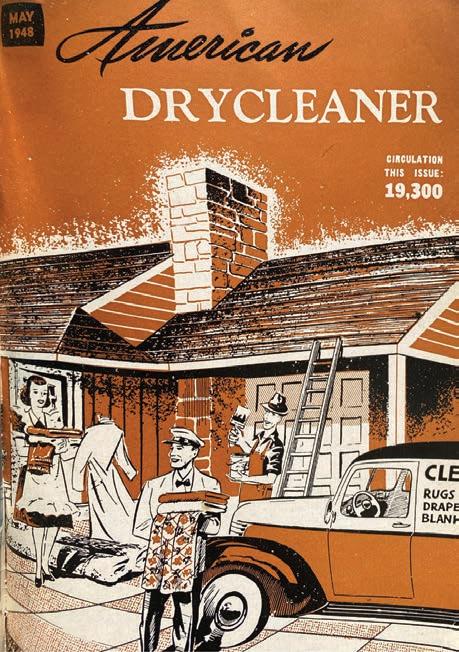









When you welcome American Express® Cards, you have access to benefits, services and programs to help your business thrive, including curated o ers and discounts to help you get more out of your business, and solutions and tips to help attract new customers. Scan the QR code for more information on available resources.















